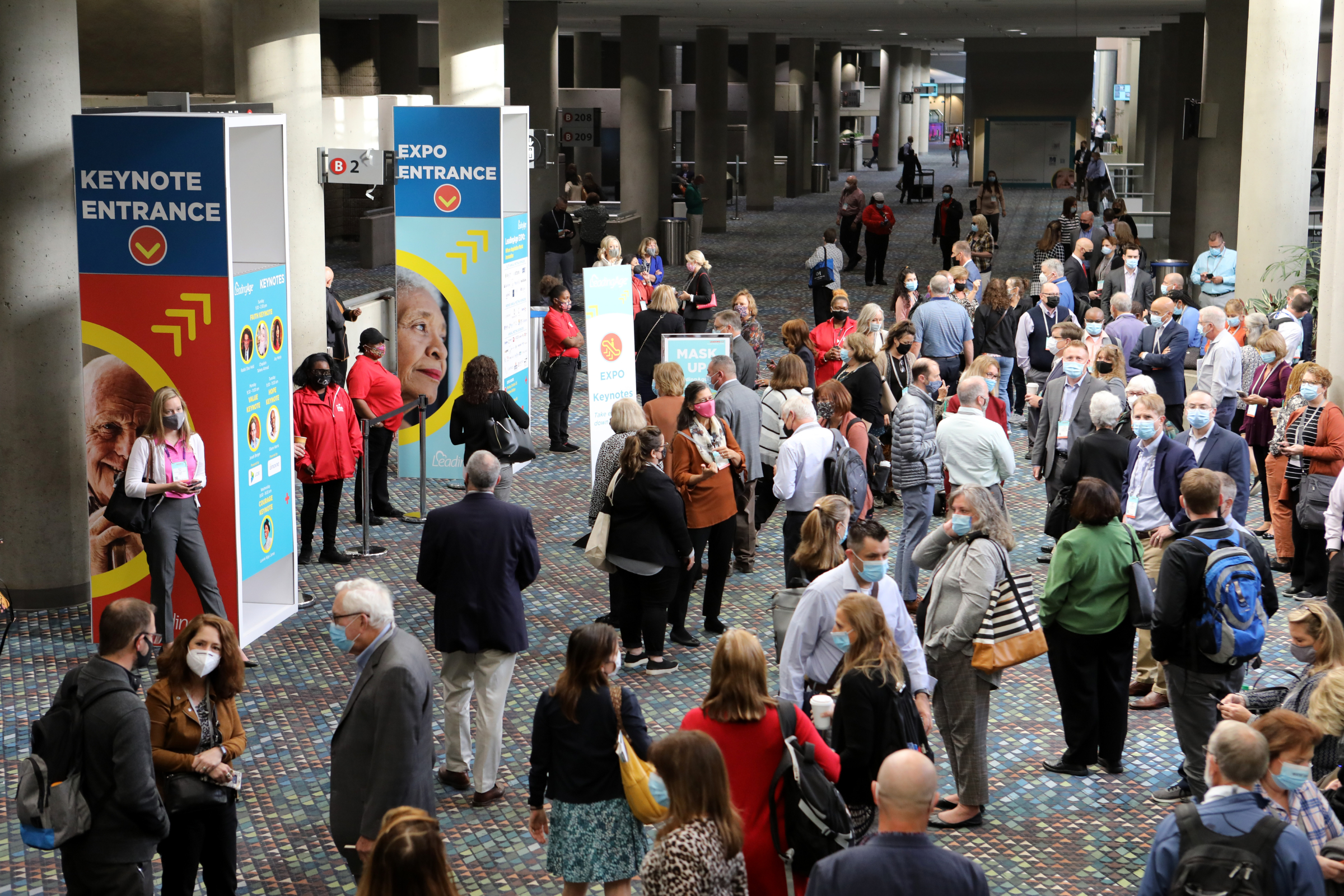The American Rescue Plan and State and Local Financing
The American Rescue Plan contains several provisions directing money to state and local governments. This article is meant to help LeadingAge members navigate and understand where these dollars are going and which provisions are applicable to aging services and older adults.
Provisions That Could Help Fund Aging Services
- Coronavirus State Fiscal Recovery Fund: $195.3 billion is allocated for state governments and DC (with additional monies for territories and tribes), and the funding formula is based on population and unemployment data.
See here for Senate estimates on state and local funding: https://www.democrats.senate.gov/final-state-and-local-allocation-output-030821
States must follow these terms in disbursing their allocations:
- to respond to the public health emergency with respect to the Coronavirus Disease 2019 (COVID–19) or its negative economic impacts, including assistance to households, small businesses, and nonprofits, or aid to impacted industries such as tourism, travel, and hospitality;
- to respond to workers performing essential work during the COVID–19 public health emergency by providing premium pay to eligible workers of the State, territory, or Tribal government that are performing such essential work, or by providing grants to eligible employers that have eligible workers who perform essential work;
- for the provision of government services to the extent of the reduction in revenue of such State, territory, or Tribal government due to the COVID–19 public health emergency relative to revenues collected in the most recent full fiscal year of the State, territory, or Tribal government prior to the emergency; or
- to make necessary investments in water, sewer, or broadband infrastructure.
The Secretary can withhold up to half of the payments by one year. States cannot use the money to shore up pensions or to finance state tax cuts.
Notably, these conditions are much looser compared to the CARES Act dollars states received. Many states used the CARES Act dollars in 2020 to help shore up long-term care providers.
- Coronavirus Local Fiscal Recovery Fund: $130.2 billion is allocated for local governments. This includes counties, cities, towns, villages, etc. See the Senate link above for funding estimates at the local level. The terms local governments must follow are the same as the state requirements in bullets above. Counties and cities will get the money directly from Treasury; smaller units of government will get the money passed through the state. These dollars cannot be used for pension funds.
- Coronavirus Capital Projects Fund: $10 billionis allocated for states to “carry out critical capital projects directly enabling work, education, and health monitoring, including remote options, in response to the public health emergency with respect to the Coronavirus Disease (COVID–19)”.
- Medicaid HCBS: States will get a one year, 10 point increase in FMAP for Medicaid HCBS starting April 1. This is an estimated $12 billion for HCBS. Here are the conditions:
- Supplement, Not Supplant: The State shall use the Federal funds attributable to the increase under to supplement, and not supplant, the level of State funds expended for home and community-based services for eligible individuals through programs in effect as of April 1, 2021.
- Required implementation of certain activities: The State shall implement, or supplement the implementation of, one or more activities to enhance, expand, or strengthen home and community-based services under the State Medicaid program.
- Older Americans Act: $1.5 billion is allocated to state units on aging. $750 million is for nutrition programs, and $460 million is for supportive services, including vaccine outreach/education and transportation, and COVID-19 mitigation (including social isolation). Most of these dollars will flow to AAAs, but there could be partnership opportunities for other members with the supportive services dollars.
- Small Business Credit Initiative: $10 billion dollars is for states to set up programs to support small businesses, with set-asides and incentives for very small organizations and for disadvantaged groups.
Other Provisions Relevant to Aging Services Providers
- Child Care and Development Block Grant: $15 billion to state agencies for child care assistance to health care sector employees, emergency responders, sanitation workers and other essential workers, without regard to income eligibility requirements.
- Emergency Rental Assistance: $21.5 billion to emergency rental assistance, much of which is disbursed to states and localities.
- Additional Housing Dollars: $5 billion for emergency housing vouchers (via public housing agencies), $100 million for rural housing, $5 billion for homelessness assistance.
- Nursing Home Strike Teams: $250 million to states for strike teams.
- Nursing Home Infection Control Support: $200 million for this purpose through QIO contracts.
- Elder Justice Programs: $276 million for this purpose.
- Community Navigator Pilot Program: $100 million to states and local governments to set up navigator services to help communities and organizations access COVID-19 relief programs.
- Medicaid Program Options: States have the option to extend Medicaid coverage for pregnant enrollees 12 months post-partum, and to establish community-based crisis intervention services.
- Medicaid expansion: For non-expansion states that newly expand their Medicaid programs, the FMAP for ALL Medicaid services, including all LTSS, will increase by 5 points for two years.
Provisions Directed to Other Purposes
- Education Stabilization Fund: $123.8 billion to states, 90% of which must go to school districts.
- Transit Grants: $30.4 billion for transit agencies (e.g., MTA in New York City) and $8 billion for airports. Separately, dedicated programs to cover airline and rail worker wages.
- Child Care Stabilization: $24 billion to states to support child care providers. $3.5 billion for child care assistance.
- Homeowner Assistance Fund: $10 billion to states to help homeowners pay for qualified expenses.
- SNAP Administrative Expenses: $1.15 billion to state agencies.
- Water Assistance: $500 million for states and tribes to support low-income households paying for water through working with public water systems to reduce rates/arrearages.
- Substance Use Disorder Services: $30 million to states, localities, nonprofits, and providers for community-based SUD services.
LeadingAge will work with our state partners and members to help ensure that American Rescue Plan dollars are best used to support older adults and the providers that serve them.

Most Recommended
October 15, 2025
 Shutdown Week Three: Impact of Ongoing Closure on Affordable Housing
Shutdown Week Three: Impact of Ongoing Closure on Affordable Housing
December 10, 2025
Fiscal Year (FY) Funding 2026
October 07, 2025
Immigrant Workforce Matching Program Brings Workforce Relief
Recently Added
January 07, 2026
Nominate a Growing Leader for the 2026 LeadingAge Leadership Award
January 07, 2026
 Colleagues on the Move, January 7, 2026
Colleagues on the Move, January 7, 2026
December 29, 2025
 RHT Program Awards: All 50 States To Receive Funds, Says CMS
RHT Program Awards: All 50 States To Receive Funds, Says CMS
December 29, 2025



